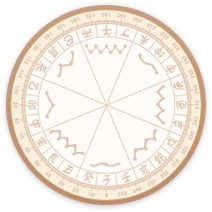大家好,今天小编来为大家解答谁教你的英文翻译这个问题,用英文怎么讲很多人还不知道,现在让我们一起来看看吧!
本文目录
地摊算命!不用说话就知道你姓什么!我想知道原因!算命***用英文怎么讲周易算命 四柱八卦用英文怎么说呵呵。我也有去算过。
“量指测姓”大揭秘
【演播室出像】最近经常上街的市民可能会在街头注意到这样一件事,有人在街边支个摊,说只要量量你的手,再挑两张卡片就知道你姓什么。观众古先生也挺好奇,不过人家还是个有心人,回家仔细一琢磨,结果发现了其中的奥秘,这不,今天他就来到了我们节目组给“量指测姓”来了个大揭密。
【同期声】古先生:“`量指测姓`大家都感觉很神奇的,实际上他就是用一种数学排列方式,应该属于一种欺骗的行为吧。这前他会有一种掩饰,量指测姓嘛,他肯定要量你手指呀,用一个皮尺在你手上量来量去,告诉你你手几尺几寸,让你记住,真正起作用的是你给他两次指示的卡片,一般是这样的,地上有个黑板呢或者是一些不可以串的卡片,你向那里指示一次你的姓名在哪个区域内,然后他手里还有一组卡片,你再从中挑出一张含有你的姓氏的,然后他就可以准确地告诉你你姓什么。让你觉得挺神奇,实际上整个过程,我自己做了个模型,它这个排列都是有规律的,比如我随便找一个区域,这个第15区,然后我再找一个区,比如D区,D区和15区唯一重叠的应该是“史”字,就是说这两个区域只有一个字是重复的,所以你选择了两个区就等于告诉了你姓什么。”
【正文】其实,古先生说这个原理很简单,将数学的直角坐标系经过平面化后,将姓氏进行规则排列,就可以进行测算了,操作起来非常简单。
【同期声】古先生:“他这个原理是这样的,我做了个简单的对照图,用ABCDEFG表示的是区域,这些区域内排列的字不太重要,A区我用A1到A6来表示,第二个区域我用大写的123456来表示的,它这个区域里的第一个字,就是英文字母区域里所有的第一个字,比如A1、B1、C1、D1、E1、F1,第二区呢,是相应的英文字母表示区域里的所有的第二个字,下面都是以此类推的,只要是你找到了相应的姓氏在某一区域,那就意味着你的姓氏一定是英文字母所显示区域的第几个字。就是说,你把这两个图放在一起,它们两唯一重叠的只有一个字。”
【正文】利用这种方法,不光可以进行姓氏的测算,还可以对人的生日等一些个人信息进行测算。
【同期声】古先生:“我把这个东西揭露给大家,就是希望大家知道本身这东西的原理,让大家少上当受骗。”
占卜的英文是divination。
divination英[ˌdɪvɪˈneɪʃn]美[ˌdɪvəˈneʃən]
n.卜;预言;筮;占卦;
[例句]They're part of an ancient Greek divination ritual.
他们是古希腊占卜仪式的一部分。
These characters were mostly prayers by Shang rulers at divination and sacrificialrites, as well as simple records.
这些文字,大都是商代统治者占卜祭祀时的祝辞和简单记事。
Will time turners or divination come into play in some way again?
也许时间转换器和占卜术又以某种方式发生了作用?
To foretell through or as if through the art of divination.
占卜,预言通过或似通过占卜术预言。
Isn't this the cup my master drinks from and also uses for divination?
这不是我主人饮酒的杯吗?岂不是他占卜用的吗?
周易算命"Zhouyi Fortune-Telling"
四柱八字或简称八字:Four Pillars of Destiny(Ba Zi)
八卦 The eight trigrams
易经概述:
The I Ching(Wade-Giles), or“Yì Jīng”(Pinyin); also called“Classic of Changes” or“Book of Changes” is one of the oldest of the Chinese classic texts.[1] The book is a symbol system used to identify order in chance events. The text describes an ancient system of cosmology and philosophy that is intrinsic to ancient Chinese cultural beliefs. The cosmology centres on the ideas of the dynamic balance of opposites, the evolution of events as a process, and acceptance of the inevitability of change(see Philosophy, below). In Western cultures and modern East Asia, the I Ching is sometimes regarded as a system of divination. The classic consists of a series of symbols, rules for manipulating these symbols, poems, and commentary.
易经的组成:(易经和易传)
By the time of Han Wu Di(汉武帝 Hàn Wǔ Dì) of the Western Han Dynasty(circa 200 BCE), Shi Yi was often called Yi Zhuan(易传 yì zhùan,“Commentary on the I Ching”), and together with the I Ching they composed Zhou Yi(周易 zhōu yì,“Changes of Zhou”).
易经的名字解释:
*易(yì), while as a verb it implies“to change“ or'to exchange/substitute one thing for another'.
*经(jīng) here means“classic(text)”, derived from its original meaning of“regularity” or“persistency”, implying that the text describes the Ultimate Way which will not change throughout the flow of time. This same character was later appropriated to translate the Sanskrit word'sūtra' into Chinese in reference to Buddhist scripture. In this sense the two concepts, in as much as they mean'treatise,''great teaching,' or'canonical scripture,' are equivalent.
The I Ching is a"reflection of the universe in miniature." The word"I" has three meanings: ease and simplicity, change and transformation, and invariability.[2] Thus the three principles underlying the I Ching are the following:
1. Simplicity- the root of the substance. The fundamental law underlying everything in the universe is utterly plain and simple, no matter how abstruse or complex some things may appear to be.
2. Variability- the use of the substance. Everything in the universe is continually changing. By comprehending this one may realize the importance of flexibility in life and may thus cultivate the proper attitude for dealing with a multiplicity of diverse situations.
3. Persistency- the essence of the substance. While everything in the universe seems to be changing, among the changing tides there is a persistent principle, a central rule, which does not vary with space and time.
—易一名而含三义:易简一也;变易二也;不易三也。 commented on by Zheng Xuan(郑玄 zhèng xúan) in his writings Critique of I Ching(易赞 yì zàn) and Commentary on I Ching(易论 yì lùn) of Eastern Han Dynasty.
四柱:
* The four pillars is an English translation of the Chinese dynastic phrase"Shi Chen Ba Zi".
* The Chinese term(时辰八字, Shi Chen Ba Zi) literally translates to"Hour of the Eight Characters".
* It is also under the Chinese term(四柱命理学, sei cyu ming lei hok) which literally translates to"The Four Pillars Life-ology".
* It is commonly referred to by the shortened names of"Four Pillars" or"Ba Zi". One of the most frequently used alternate phrase is"Four Pillars of your birthday".
八卦:
The Bagua(Chinese:八卦; pinyin: bā guà; Wade-Giles: pa kua; literally"eight symbols") are eight diagrams used in Taoist cosmology to represent a range of interrelated concepts. Each consists of three lines, each either"broken" or"unbroken," representing a yin line or a yang line, respectively. Due to their tripartite structure, they are often referred to as"trigrams" in English.
The trigrams are related to Taiji philosophy and the Wu Xing. The ancient Chinese classic I Ching consists of the 64 pairs of trigrams(called"hexagrams") and commentary on them. The interrelationships among the trigrams are represented in two arrangements, the Primordial(先天八卦),"Earlier Heaven" or"Fuxi" bagua(伏羲八卦), and the Manifested(后天八卦),"Later Heaven," or"King Wen" bagua. The trigrams have correspondances in astronomy, astrology, geography, geomancy, anatomy, the family, and elsewhere.
The eight trigrams are: Qian天,"Heaven;" Xun风,"Wind;" Kan水,"Water;" Gen山,"Mountain;" Kun地,"Earth," Zhen雷"Thunder," Li火,"Fire;" and Dui泽,"Lake."
如果你还想了解更多这方面的信息,记得收藏关注本站。









